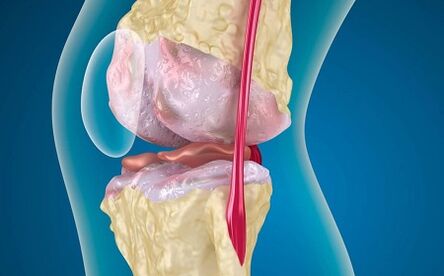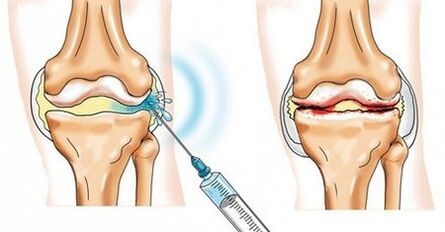
It will be about such an unpleasant disease of the skeletal muscle system as arthrosis of the knee joint.From the article you can find out what kind of disease it is, why it happens, what are the main symptoms of knee arthrosis and how to treat this secret disease.
Knee joint arthrosis (another name - gonartrosis) is a chronic knee joint disease, which is called articular destruction of the joint cartilage, followed by fusion deformation and limiting engine activity, is called.
Gonartrosis is the most common type of arthrosis.Most often, the disease is diagnosed in people aged 40 and older.In the older age group, knee arthritis is more common in women, among younger patients the disease is more often diagnosed in men.In approximately 7% of cases, the disease leads to the development of disability.
Reason
The main causes of the development of the disease are:
- Violation of metabolism in the body;
- Excess weight, which leads to an increase in load on the knee joints;
- increased capillary fragility, various circulatory disorders;
- knee joint damage (cracks, fractures, meniscus rupture, ligaments);
- some endocrine diseases;
- Joint inflammatory diseases (arthritis, rheumatism);
- Old injuries that were incorrectly healed;
- Class of traumatic knee for knee (heavy athletics, bodybuilding construction, football, gymnastics, tennis, athletics);
- hereditary predisposition;
- Congenital abnormality of the knee joint structure.
Types of arthrosis
The following types of arthritis are distinguished by the origin:
- primary- Most often it occurs in the elderly, at risk are overweight patients;
- middle- It develops after knee injuries or infectious diseases that were incorrectly cured.
According to the localization of the pathological process, the following types of knee arthrosis are distinguished:
- Left- affects the left knee joint, most often observed in athletes and medium -aged patients with overweight;
- Rightly- affects the right knot of the knee, most often found in athletes and humans, whose work is associated with increased dynamic and static loads on the right foot;
- bilateral- The most severe type of knee joint arthrosis, which can lead to disability, is most commonly found in older people.
Symptoms
The main clinical signs of the disease are:
- Knee pain - at first, pain appears with increased physical exercise in the joints, movement, jogging, long walking and disappearance at rest, while the disease develops, patients arise when they try to move after a long period of rest, a person with knee arthritis is difficult to go to the stairs, over time, the knee pain becomes constant;
- Breakfast stiffness at the knee joint - lasts about half an hour, over time the duration may increase;
- knee stalemate when moving;
- With the development of the inflammatory process, patients complain about the feeling of knee aggravation, the joint is slightly swollen and increases in size;
- The shape of the joint gradually changes, its deformity occurs;
- With the further development of the disease, dementia appears, movements in the knee joint are limited, the patient cannot completely suppress the injured leg;
- Atrophy of the femur muscles gradually develops, they become weak and unclear, decrease in volume.
Treatment
When the first unpleasant symptoms appear, you should consult a doctor immediately and undergo an examination.Timely treatment will increase the chances of healing and improve the prognosis.Self -medication is unacceptable and can lead to the development of a number of complications, up to disability!
Knee arthrosis treatment includes the following stages.
The therapy not -drug
- The injured connection must provide rest, so crutches or reeds are used to download it;
- ultraviolet radiation, heat - for removing pain;
- wearing special orthopedic shoes, knee pads, special bedding;
- Massage, exercise therapy, physiotherapy - prescribed after stopping the acute phase of the disease.
Drug therapy

- Reception of nsaids inside (tablets) and externally (gel, ointments) - to relieve inflammation and knee pain;
- Special medication injections into the joint cavity - performed in the absence of the effect of taking NSAIDs;
- Slow system systems - to normalize metabolic processes in cartilage tissue;
- Tools to improve blood circulation - contribute to normalization of blood circulation in the pathological focus and improve the distribution of drugs in the damage area.
Surgical intervention
Indicated with a complete loss of joint function and includes knee joint prosthetics.
Health for you and your loved ones!























